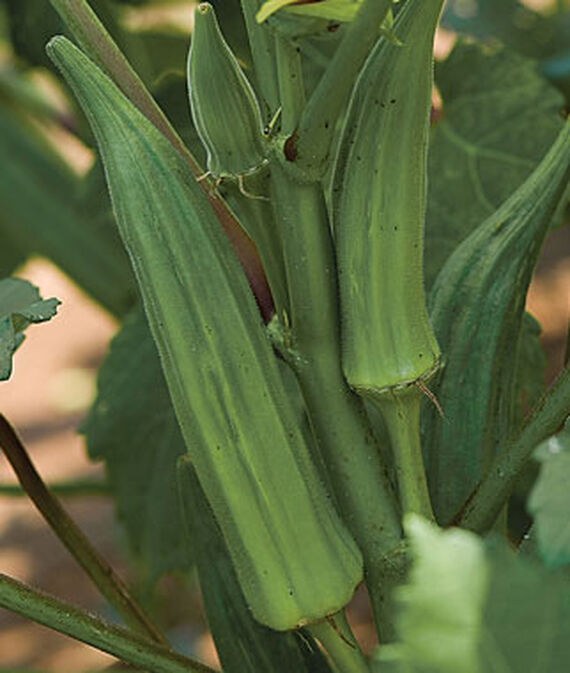Okra Clemson Spineless Variety Seeds (also known as Lady’s finger), is one of the most popular okra on the market. It is grown as an annual vegetable. It has an unusually high gum content, which makes it popular as a thickener in stews/soups.
Okra can be frozen, pickled, and canned can be served raw, marinated in salads or cooked on its own, and goes well with tomatoes, onions, corn, peppers, and eggplant. Whole, fresh okra pods also make excellent pickles.
How to Okra Clemson Spineless Variety Seeds
- Transplanting: Transplant when there are at least two sets of true leaves.
- Spacing: Space seedlings 38*45cm
- Soil: Fertilize prior to planting, and again when plants are 12 inches tall, and finally when the plants begin to flower.
- Temperature: Grows best when temperatures remain above 50°c
- Additional Care: Okra is very tolerant of clay soils and heat.
Appearance and Use
This exotic, tropical-looking, plant grows 3-6 feet tall and produces 2-3 inch, pale yellow with a maroon center, Hibiscus-like flowers. Narrow, ribbed, edible pods with pointed ends follow the flowers. The pods become tough as they increase in size, so harvest them when they are 3 inches long or less. Pick them daily to keep the plants in production.
How to Sow Okra Clemson Spineless Variety Seeds
- Sow okra seeds in average weather, well-worked soil.
- Preferably grow okra in a different place every year to avoid problems with pests and diseases.
- Prepare the bed by turning the soil under to a depth of 8 inches.
- Level with a rake to remove clumps of grass and stones.
- Plant 3-4 seeds every 12 inches in rows 36 inches apart.
- Cover with 1 inch of fine soil.
- Seedlings should emerge in 14-21 days.
- Thin to strongest seedling per group when plants are 1-2 inches high.
How to Grow
- Keep weeds under control during the growing season.
- Weeds compete with plants for water, space, and nutrients, so control them by either cultivating often or use a mulch to prevent their seeds from germinating.
- Avoid disturbing the soil around the plants when weeding.
- Keep plants well-watered during dry periods to promote rapid, uninterrupted growth.
- Plants need about 1-1 ½ inches of rain per week during the growing season.
- Use a rain gauge to check to see if you need to add water. It’s best to water with a drip or trickle system that delivers water at low pressure at the soil level.
- If you water with overhead sprinklers, water early in the day so the foliage has time to dry off before evening, to minimize disease problems. Keep the soil moist but not saturated.
- Monitor for pests and diseases.
Harvesting and Storage
- Pick young okra pods that are 2-3 inches long and harvest them every other day to encourage continuous production.
- Cut the pods from the stem just above the cap.
- Store pods for several days in the refrigerator in a plastic bag.
- Okra pods are delicious steamed, in soups and fried.
- Okra may also be stored blanched and frozen.

















Customer reviews
Reviews
There are no reviews yet.
Only logged in customers who have purchased this product may leave a review.